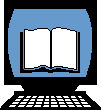On a recent venture when working with a Kronos customer we identified some questions on ownership, responsibilities, and some questions on delegation. These (fill in the blank) items come at a time when everyone seems to have opaque job or career visions. When implementing a Kronos Timekeeper system for the first time or implementing change in an organization, we all want to be successful! This article covers some of the finer points. Interested? Continue reading!
Identify the why and how and when developing material think how this can be turned into wow! Here are some methodologies that I have seen work in the past:
-
Create a FAQ document when you are involved in an implementation (Frequently Asked Questions). This doesn't mean necessarily having to answer the question right away, but if the same question is being asked twice... it's often noteworthy for a FAQ item.
-
When documenting a process, don't forget basic or "need to know" information (an example being: entering a new hire, what systems they need to be entered into (i.e. ADP, Kronos, PeopleSoft, or Microsoft login), and what forms need to be filled out). This could not only help your organization but also those assisting in development (i.e. a well-written new hire process could assist the person writing an employee import).
-
Ask questions (the old motto: "There are no stupid questions!"). Participation is a key strategy in understanding the why or how when thinking of documentation to develop.
-
If change is being introduced, identify early the new items and those who will be responsible. By identifying changing items early, you are preparing people gradually.
-
When documenting Kronos job aids, use screenshots if possible (or for those more technically sophisticated), recorded training sessions are also useful (think YouTube videos even!).
-
If processes are being simplified when changed, do not denote any dated processes or items into "new" material. Save those for a separate document to show change advantages.
-
Take a shared responsibility approach with other team members and don't take on all the work yourself in developing material. Everyone needs a vacation from time to time or simply time off to accomplish personal goals. It is always nice to return what seems a high priority phone call and have the question answered after the documentation recipient continues reading!
-
Take the reader's perspective in mind as much as you can. A little empathy can go a long way. If at all possible and time permits, even have a third party proofread.
-
If you are a participant in training, remember to take notes frequent and often. Remember that we are only human and not machines and can't be expected to retain every minute detail. Taking notes has at least helped me to establish a reference point in the past.
-
When authoring documentation, try to keep the reader engaged (back to why & how = wow!).
In closing... As noted in our Training Zen section "Employee education is an investment in both time and money. Make the most of it." For more information on custom training, also see the webinars in the Training Zen section of our website.
Comments